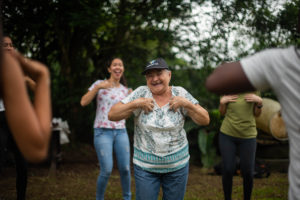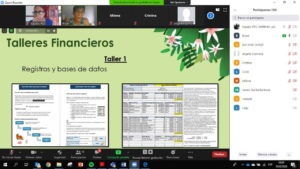Community means leaving no one behind
On a typical pre-pandemic Wednesday, approximately 60 students from EARTH University would travel by bus to rural areas near our campus, to collaborate with local farmers. These projects, led by fourth-year students, seek to improve the socio-environmental, entrepreneurial, and organizational practices of small-scale producers, while also promoting responsible agriculture, solving real challenges, and fostering close ties with neighboring communities.
Following the global introduction of COVID-19, the project managers of EARTH’s Community Development Program – Luis Enrique Carazo, Kimberly Coto, and Paula Morales – faced the challenge of migrating the University’s signature community-building initiatives to the digital world. Although they had previously considered the possibility of using the internet to reach more people, they had never conducted a study measuring web access among the area’s rural farmers. The process was not going to be easy. However, they were adamant about one thing: No one could be left behind.
The three managers devised plans to adapt and advance each of the Program’s projects. They consulted with communication specialists, researched digital platforms, practiced writing clearly and accessibly, and learned how to create striking presentations and videos. Over several weeks, they managed to fully digitize the Program.
“We were fortunate to work with committed students who put their best effort into making videos and staying in touch with their hosts,” Morales says. “At the end of the academic year, we managed to successfully conclude the 18 projects we had begun working on at the start of the year.”
Thanks to webinars and virtual workshops as well as partnerships with organizations such as Grameen Costa Rica, the Program was able to expand its geographic reach – supporting more than 11,000 people across Costa Rica. “On a social networking site, we led a workshop about managing emotions,” Coto says. “It was incredible to interact with participants from all walks of life and professions – for example, one attendee was a seamstress from Guanacaste.”
Carazo adds that, although it was frustrating for many students not to physically visit the communities, everyone managed to motivate each other and honor their promise of accompanying the producers – albeit from a distance.
Looking ahead, the projects managers are excited to further grow students’ skill sets, while also deepening the mutual learning between our rural neighbors and our young leaders of change.






